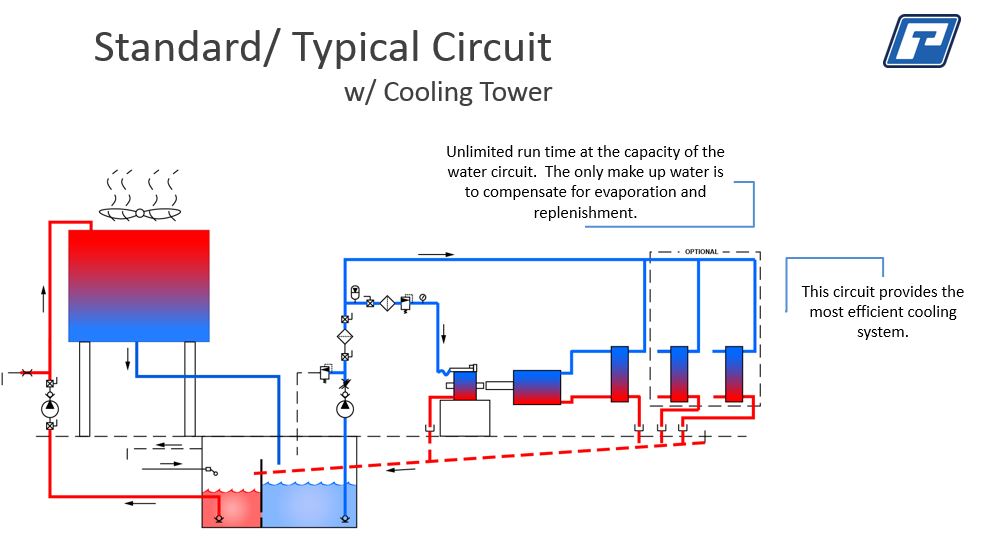Basics of Engine Test Cell Water Circuits
Learn from industry expert, Rick Ballo, about the practical and technical aspects of water circuits. Throughout this interactive presentation, Rick will educate and consult about different variants of cooling system installations, weighing the pros and cons of each.
In every dynamometer test, there needs to be some mechanism of heat removal. In smaller installations, this can be as simple as allowing the unit to air cool after a short duration test. As you scale up to larger dynamometers you move from air-cooled systems to more complex apparatus’ that rely on water to effectively displace the energy from the test. These are commonly called water circuits.
In this webinar, we review the Basics of Engine Test Cell Water Circuits including why they’re needed, how they function in practice, important considerations, and cover a variety of installation options.
Why Do I Need a Water Circuit?
The entire function of an engine is to generate energy to accomplish some sort of task. Whether it’s to move your car or operate a piece of heavy duty construction equipment, the engines energy output is redirected into mechanical movement. But when you’re running a test, and artificially creating a load on your test engine with the use of a dynamometer there is no mechanical output involved. That same amount of energy is created, but it doesn’t work towards a mechanical end, the only output left is heat.
With some tests lasting up to 48 hours, often with a heavy load, the heat output can be extraordinary. The risk of overheating your engine can lead to catastrophic failures, and air-cooled systems don’t have the capacity to dissipate the heat, the most cost effective and practical solution is a water circuit.
What Does a Water Circuit Do?
At it’s most basic, a water circuit provides a method of removing power in the form of heated water from the dynamometer and the engine. It supplies cool water to the dyno and engine inlet, and carries heated water away for discharge or cooling. The water flows continuously through the system and maintains a reasonable temperature for the duration of the test.
In regions blessed with an abundance of water, you can draw directly from your source and discharge the heated water. It’s simple and effective, but is only a fit in the best of circumstances. For everyone else, a standard circuit featuring a cooling tower and reservoir is likely necessary.
Standard Water Circuits
A standard, or typical water circuit is what you’re most likely to find at your average installation. With this set-up, the cooling capacity is directly proportional to the size of the reservoir, and the rate of flow. Starting at the beginning, cool water stored in a reservoir and is drawn into the engine under test. The engine, along with the dyno, dissipate heat into the water where it is discharged into an adjacent hot reservoir. A pump draws hot water into the cooling tower, where evaporation acts as the main method to return the water to a usable temperature where it is then returned to the cold reservoir.
The idea that cool water is filtered through the engine is actually a misnomer. The water is actually still quite hot, though still sufficiently cool to draw energy from the unit under test.
A series of optional components can be added to the system to lend additional cooling capacity such as an After Cooler Cooling Column, a Charge Air Coole, or and Engine Cooling Column. These can increase the capacity of your system and allow for extended testing.
Design, Construction, and Installation
We understand that building a complex system such as the ones outlined in the webinar can be a daunting task. At Power Test, we have an entire team dedicated to the design, construction, and installation of such systems. We work directly with you to navigate the obstacles that your installation faces and deliver a result that accommodates all of your considerations. Let us know if you have additional questions about a potential system, and we’ll do everything in our power to Make Your Testing Easy.



